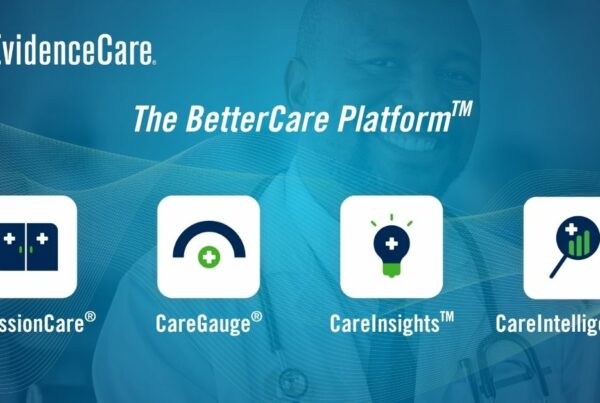Change is a constant in healthcare IT. From technological advancements to evolving patient needs, the landscape is always shifting. As leaders in this field, it’s crucial to not only embrace change but also to effectively manage it to ensure the smooth operation of your healthcare system.
In this article, we’ll explore the fundamentals of change management, featuring insights from Novlet Mattis, SVP & Chief Digital & Information Officer of Orlando Health, as discussed in her interview on The Better Care Podcast.
Some quotes have been slightly edited for brevity.
Understanding Change Management in Healthcare
Change management is the process of planning, implementing, and controlling change within an organization. It involves a structured approach to transition individuals, teams, and organizations from one workflow to another in an efficient way. At its core, change management is about minimizing resistance and maximizing acceptance of change.
In the context of healthcare IT, change management plays a vital role in implementing new technologies, upgrading existing systems, and adapting to regulatory requirements. Whether it’s the adoption of an electronic health record system, the integration of telemedicine solutions, or the implementation of clinical decision support software, healthcare IT leaders must navigate these changes proactively and effectively to ensure optimal outcomes.
With so much changing in the world of healthcare delivery, a clear vision where you’re trying to go or what you’re trying to accomplish is crucial. That’s why the best leaders articulate the “why” behind the change: how it will improve patient care, staff satisfaction, or financial sustainability.
Paint a vivid picture of the future and connect it to everyone’s aspirations. Avoid technical jargon or vague goals. Craft a simple, clear, and inspiring vision that captures the heart of the change.
Think “delivering world-class care with the best technology” instead of “implementing EMR system X.”
The first is a vision; the second is a goal that serves that vision.
“Change management is not easy because people are used to doing things a certain way. When we say, ‘Okay, now do it this way, with this new tool,’ we really have to work hand in hand with them to adopt it optimally.” –Novlet Mattis, CDIO at Orlando Health
Key Principles of Change Management in Healthcare
Communication: Clear and transparent communication is essential throughout the change process. IT leaders should effectively communicate the reasons for change, the expected benefits, and how it will impact various stakeholders. Open dialogue fosters trust and encourages buy-in from end users, making the process easier.
Don’t simply send out one email notice. Utilize multiple channels (town halls, email, video messages, training sessions, 1-on-1’s) to keep everyone informed, address concerns, and celebrate progress. Be honest, even when things get messy, and show you’re in it with them.
Stakeholder Engagement: Involving stakeholders early in the change process increases their sense of ownership and commitment. This includes clinicians, IT staff, administrative personnel, and end-users. By soliciting their input and addressing concerns proactively, leaders can build a coalition of support for the new process.
“Our end users must find value in new technology. So, we must be able to either convince the clinicians that it’s going to be valuable for them, or they have to collaborate with us on the business case. This way, I can present it to my CFO to secure funding for this project and prioritize it accordingly.” –Novlet Mattis
Education and Training: The implementation of new technology often requires new skills and knowledge. Leaders must provide comprehensive education and training programs to ensure that end users are equipped to navigate the transition smoothly. This may involve workshops, online modules, or one-on-one coaching sessions tailored to individual needs.
“We can hand all of our clinicians and our administrators the best products, but we really have to help them to adapt to it.” –Novlet Mattis
Flexibility: Change is rarely linear, and unforeseen challenges may arise along the way. Healthcare IT leaders should remain flexible and adaptable, ready to adjust their approach as needed. This may involve revisiting timelines, reallocating resources, or refining strategies based on feedback and lessons learned.
Recruiting the Right People: The people needed in an innovative environment may not be the ones with the most accolades or most impressive resume. Assemble a diverse group of champions from various departments who understand the “why” and are energized to rally the troops in the face of adversity.
“We had to ensure that we had the right people working in the innovation space—those who are comfortable with failure, who understand that things might not always go as planned, and who are willing to try something different if the initial approach doesn’t work out. We actively sought out individuals who embody these qualities.” –Novlet Mattis
Celebration of Successes: Break down the change into manageable steps and encourage early wins. Celebrating milestones throughout the journey of change is important for ongoing support and motivation. Recognize and reward individuals and teams who take initiative and demonstrate the desired behaviors.
Whether it’s achieving key milestones, overcoming obstacles, or re-communicating tangible benefits, acknowledging success encourages continued momentum from end users while they’re adapting to changing processes.
—
In conclusion, change is happening every day in healthcare. By embracing the principles of change management and applying them effectively, healthcare IT leaders can navigate change with confidence and ensure the success of innovative initiatives. By applying the insights above, leaders can prepare and lead their organization through change successfully.
For the full interview between Amy Deaton and Novlet Mattis, watch or listen to Episode 14 of The Better Care Podcast.









